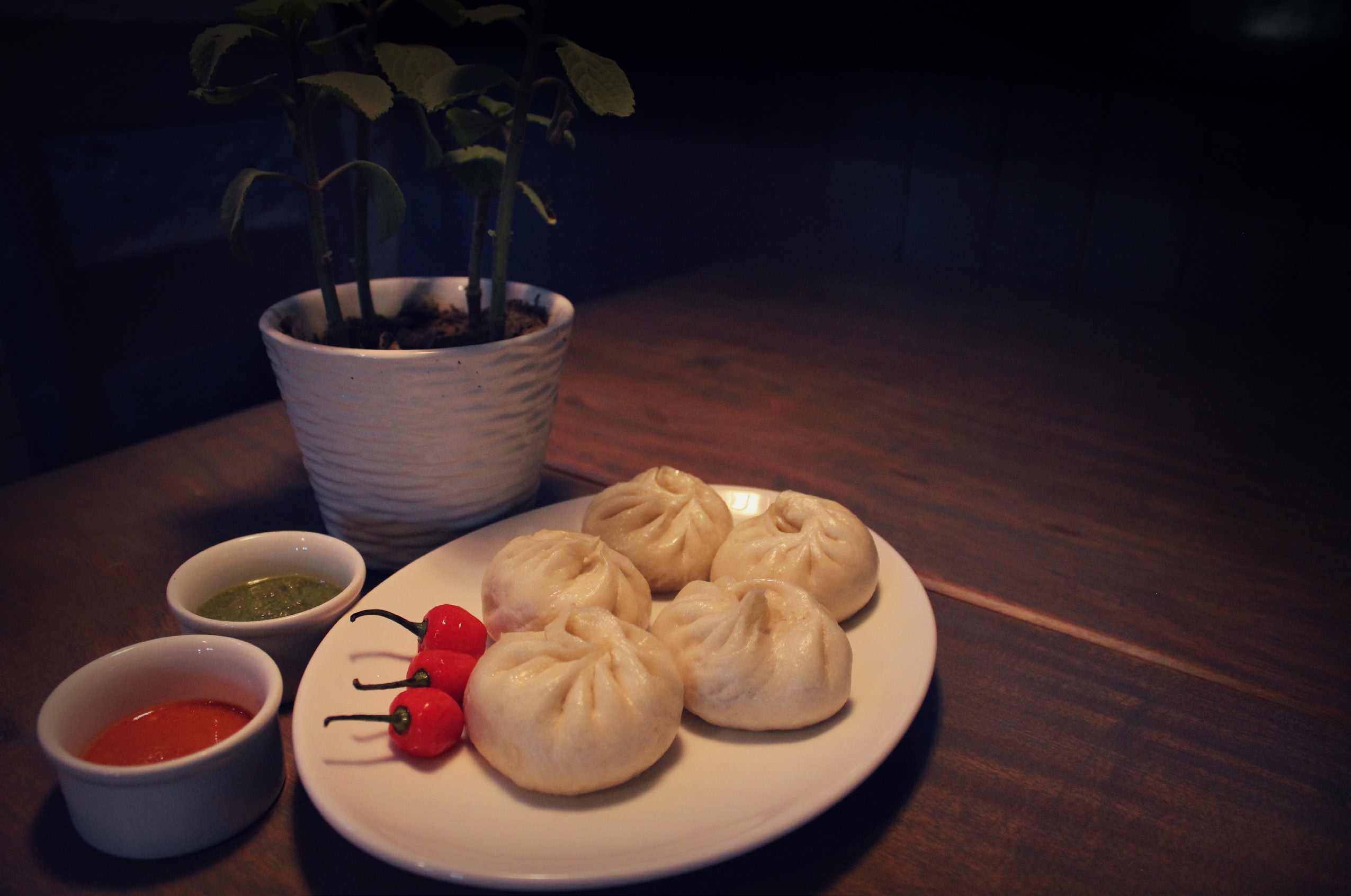Undoubtedly the most known, loved and relished food ambassador of the Himalayan cuisine, momo’s culinary journey from the hills to mainland world has been as vibrant as the cultures that today claim its paternity. But whom does it really belong to? Madhulika Dash goes down memory lane.
What pasta is to Italians, momo (not momos, insist Yangdup Lama, a momo aficionado and co-owner Lungta Café) is to Himalayan cuisine. You can eat it for breakfast, lunch or dinner; it can travel with ease and can have as many variations (in shape and filling) as pilaf in India. In fact, adds Lama, “there is no benchmark for this popular Himalayan food, except that a traditional momo, which is usually the size of your fist, should have onions, chopped not minced.” This perhaps explains how momo the steamed dumpling from Himalayas – gained its many shapes and sizes, including the insanely delicious Sha Momo or Momo Cha.
Yet, when it comes to momo’s ancestry a lot of it is sheer conjecture. While one theory connects it to the Chinese Jiaozi, which has been the inspiration behind most of the dumplings including the famous momo; another believes it to have originated in Tibet, and popularized by the Newari community in Nepal. And yet another insist that it was an innovation on the Himalayan breads that were often steamed, soft and airy – and could soak in a good quantity of broth.
If one has to go by the sheer look and feel of some of the varieties of momo today, there is little denying the fact that momo could have been inspired by the bread, developed inspired from the Chinese dumplings and modernized by the Tibetan and Nepali community, who also got it into India – and took it to the rest of the world as the finest offering of their indigenous cuisine.
But when it comes to cooking technique and the presence of dumplings (and pancakes), it predates the Han Dynasty, which is believed to have invented the Jiaozi. Steaming and rice pancakes (some rose to the size of a butter cake), says Lama, “were the two important aspect of the Himalayan cuisine, which thrived (and still does) mostly on meat, rice and very little vegetables, courtesy the rather long winters that makes growing vegetation of any kind near to impossible.”
“So most of the dishes that were developed depended upon ingredients that could be stored for long period of time like rice, and those that were readily available, like yak meat and butter. With little spices and flavoring available, it was animal fat and later chillies that gave the dishes its flavours. This is the reason that most traditional dishes from the upper side of Himalaya taste bland to the mainland palate.”
Momo’s first iteration interestingly was boiled yak meat cocooned in a rice orb and steamed, and was drier to the moist dumplings that we see today. But this was important as dried food travelled well. Legend has it that the Mongolian army would carry a box of momo individually while traveling through difficult terrain in the mountain region of Himalayas. Momo, it is said, was an essential part of Genghis Khan, who is known to have popularized the earlier style of kebab making, ration as well. Folklore has it that the legendary warrior was so fond of this dumpling that he would always have it as his pre-fight meal to avoid feeling weak (or hungry) during the battle.
Fascinatingly, momo still remains a travel essential for most of the Himalayan tribes, who carry it with chutney made with chillies and salt. And at home, says Lama, “it is still served with the broth of the meat, making it a meal rather than a snack.”
Momo makeover began when it reached the lower hills of Tibet and from there to Nepal, thanks to trading and conquests. Blessed with a more generous nature, Tibetan homes used their access to onions, greens, ginger and even a variety of chillies and meat to change what began as a rustic dish of rice, butter and yak meat into a gourmet affair of rice and different, delicious fillings. It was in Nepal that momo took its dumpling-like shape and the cocktail size, but it wasn’t just the shape that Tibet
and Nepal changed for momo, it was also the casing. Unlike the original use of rice flour, Nepali momo, at least the one commonly served (and seen), is made of maida. It was in Nepal that the quintessential red, chilli and tomato based chutney was paired with momo, and the famous cocktail momo – the bite size treat was developed.
It was this version of momo that mainland India was introduced – and it remained, for a long time, the only introduction the world when it came to Tibetan, Nepali, Bhutanese and even North Eastern cuisine.
The new versions of momo did little to change the significant role that the dish played in the hilly region, which continued to be the “power meal” that could sustain people through a hard day of work or travel. Tales narrated by old soldiers of Assam Rifles tells how many of the Tibetan refugees rescued along with Dalai Lama in 1959, and refugees that came later, carried these little orbs of rice tied in a tiny swathe of cloth to survive the treacherous journey to Assam. In fact, says an old hand, “a steamer and few mounds of rice was all that was needed to make a meal anywhere.” The use of pork in filling and frying the momo to give that crunch could have been adopted by the Tibetans while making Assam their home.
Thanks to all the travelling that momo did – both in its early years and later- added to its all-palate appeal and turning momo into a versatile street treat. So much so that today momo is served in a variety of ways, each with its unique taste and highpoints. In Tibetan style for instance, says Lama, “momo is served with chilli paste, those who follow the Mangolian style, add a bowl of mildly spiced broth (usually beef). Nepalese people serve momo with chilli chutney, which has tomato as a base and is often flavoured with coriander, sesame or peanut; and even the Kathmandu’s popular street breakfast the Momo-Cha, which is essentially cocktail style momo served on a tomato base.”
Yet, when it comes to Himalayan cuisine and momo, ends Lama, “there is only one style of momo that emerges as favourite: steamed fist size dumpling served with a spicy chutney and a steaming bowl of beef soup.”


